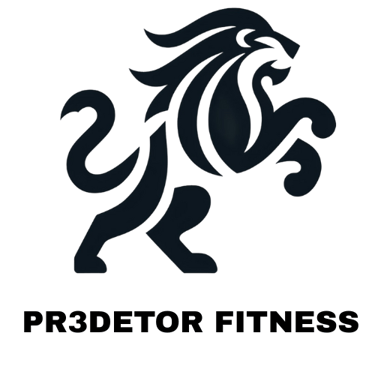Mastering the Overhead Press: Deltoid Muscles, Techniques, and Injury Prevention
" Holy Trinity of the Shoulder"
Coach Gabe
1/24/20257 min read


The Overhead Press:
The overhead press is a fundamental exercise that plays a significant role in developing the deltoid muscles, which are essential for upper body strength and shoulder stability. The deltoids, composed of anterior (front), lateral (side), and posterior (rear) fibers, work in harmony during the overhead press to lift the weight overhead while stabilizing the shoulder joint. This relationship between the movement and the muscle makes the overhead press a key exercise for building rounded, powerful shoulders, improving posture, and enhancing overall functional strength. Understanding this connection can elevate your fitness routine and maximize results.
Muscle Breakdown: Deltoid Domination
The deltoid muscles, often referred to simply as the deltoids, play a crucial role in the overhead press, a fundamental exercise for building upper body strength. This group of muscles is composed of three distinct parts: the anterior (front), medial (lateral), and posterior (rear) deltoids. Each portion of the deltoid has specific functions that contribute to the overall effectiveness and efficiency of the overhead press.
The anterior deltoid is primarily responsible for shoulder flexion and medial rotation, making it vital during the pressing motion. As you push the weight overhead, the anterior deltoids activate first, generating the initial force needed to lift the load. A well-developed anterior deltoid not only enhances pressing strength but also contributes to shoulder stability.
The medial deltoid plays a significant role in abduction of the arm, allowing the arms to move away from the body. This muscle's activation ensures that the weight is lifted straight overhead rather than in front of the body, which can lead to imbalance and injury. Strengthening the medial deltoid enhances muscular efficiency and coordination during the overhead press, maximizing training results.
Lastly, the posterior deltoid aids in shoulder extension and external rotation. While it may not be the primary driver in the upward movement, a strong posterior deltoid is essential for stabilizing the shoulder joint during the press. This muscle balances the anterior deltoid, promoting proper posture and reducing the risk of common shoulder injuries associated with muscle imbalances.
Incorporating exercises that specifically target each of these deltoid areas will not only enhance your strength in the overhead press but also improve overall shoulder health. For athletes, understanding the distinct roles of these three deltoid muscles referred to as (Holy Trinity of the Shoulder) is fundamental for developing a focused training program that meets specific needs and enhances the look and function of the shoulder in general.
The Role of the Rear Deltoid in Overhead Lifts
The rear deltoid, often overshadowed by its anterior and lateral counterparts, plays a crucial role in providing stability during overhead lifts, such as the overhead press. This muscle, anatomically positioned at the back of the shoulder, is essential for maintaining proper shoulder joint mechanics. Its primary function is to stabilize the humerus in the glenohumeral joint, especially as weights are lifted overhead. When the rear deltoid is adequately engaged, it assists with the overall integrity of the shoulder, helping to distribute the load evenly and preventing excess strain on the rotator cuff muscles.
Imbalances between the front and rear deltoids can lead to significant issues in shoulder health. A well-developed rear deltoid counters the tightness often experienced in the anterior deltoid due to daily activities and poor posture, such as sitting for extended periods. Such imbalances may not only affect the performance of the overhead press but can also increase the risk of injuries, including rotator cuff tears or shoulder impingement syndromes. By prioritizing the development of the rear deltoid, lifters can foster a more balanced shoulder musculature that supports safe and effective performance of overhead lifts.
To target the rear deltoid effectively, incorporating specific exercises into your training routine is essential. Movements such as rear delt flyes, face pulls, and bent-over lateral raises are excellent choices that emphasize this muscle group. By integrating these exercises alongside the overhead press, individuals can enhance their shoulder stability, ensure symmetrical muscle development, and mitigate the risk of future injuries. Furthermore, focusing on the rear deltoid contributes to an aesthetically pleasing physique with well-defined shoulders, illustrating the muscle's dual importance in function and form.
Front and Lateral Deltoids: Keys to Stronger Presses
The deltoid muscle group, which comprises the front (anterior) and lateral (medial) deltoids, plays a pivotal role in executing a successful overhead press. These muscles are responsible for shoulder stabilization and the elevation of the arms during pushing movements. Understanding their function will enable athletes to refine their technique and increase their overall strength in pressing exercises.
The front deltoids are primarily engaged when lifting weights overhead. This muscle group aids in flexion and internal rotation of the shoulder, generating essential power during the initial phase of the press. Strengthening the front deltoids not only enhances pressing capabilities but also contributes to muscular endurance, critical for athletes seeking improved performance in strength training or competitive lifting.
In contrast, the lateral deltoids assist in abducting the arms, which means they are essential for maintaining proper shoulder positioning and balance during overhead presses. Enhanced lateral deltoid strength fosters better stability and can prevent common shoulder injuries, allowing for safer execution of pressing exercises. Targeting this muscle group can be achieved through various exercises, such as lateral raises and upright rows, integrating them into a comprehensive shoulder training regimen.
To maximize muscle development in the front and lateral deltoids, athletes should align their training goals with specific exercises that address hypertrophy. Implementing progressive overload, through increased weights or higher repetitions, coupled with exercises that isolate these muscle groups will lead to significant improvements. Moreover, incorporating compound movements like the barbell overhead press effectively engages the deltoids while also stimulating other muscle systems. By focusing on these key deltoid muscles, individuals can establish a solid foundation for a powerful overhead press, ensuring a balanced approach to strength training.
Injury Prevention Strategies for the Overhead Press
Engaging in the overhead press requires a thorough approach to injury prevention, particularly for athletes and fitness enthusiasts. The significance of warming up before lifting cannot be overstated. A proper warm-up routine prepares the body by increasing the core temperature of the muscles, enhancing flexibility, and optimizing joint mobility. Dynamic stretches that target the shoulders, wrists, and thoracic spine are particularly effective in preparing for the overhead press. Exercises such as arm circles, shoulder dislocations with a resistance band, and thoracic rotations prime the upper body for lifting.
Moreover, incorporating mobility exercises is essential. These exercises should focus on the shoulder girdle and the upper back, as they play a vital role in stabilizing the weight during the lift. Movements such as wall slides and band pull-aparts promote better shoulder mechanics, thus reducing the risk of injuries. Ensuring adequate thoracic extension is crucial, as poor posture can lead to uneven lifting and potential strain on the shoulders and lower back.
Prior to executing the overhead press, it is crucial to perform technique checks to ensure the lifter's position is optimal. This includes verifying the stance, grip width, and alignment of the wrists and elbows. Maintaining proper alignment minimizes stress on the joints and muscles, reducing the likelihood of injury. Regular self-assessments or partnering with a coach for feedback on form can further safeguard against unsafe practices.
Recognizing the signs of improper form or muscle fatigue is vital in injury prevention. Symptoms such as sharp pain, discomfort in the joints, or an inability to maintain control over the weight are indicators that the lifter should pause or reconsider their technique. By adopting these preventive strategies, athletes can engage in the overhead press with greater safety and confidence.
Comparative Analysis: Overhead Press vs. Machine Press Variations
In exploring the dynamics of strength training, two primary types of exercises emerge: the traditional overhead press and its machine press alternatives. Several university studies have sought to shed light on the effectiveness of these approaches, with a focus on muscle engagement and overall benefits. A notable study conducted by researchers at the University of Alabama found that participants utilizing the barbell overhead press experienced greater activation of stabilizing muscles compared to those using the machine press. This observation highlights the importance of compound movements in developing not only strength but also coordination.
Another study from the University of Bristol (England) corroborated these findings, specifically addressing the differences in functional strength development between the two methods. The research indicated that traditional free weight exercises, such as the overhead press, engage multiple muscle groups, requiring the body to stabilize itself during the lift. This leads to enhanced motor learning and improved muscle coordination, as the lifter must engage the core and various secondary muscles to lift the weight effectively.
Furthermore, the findings suggest that the overhead press can be more beneficial for muscle growth over time. Machine presses often isolate specific muscle groups, which may limit overall strength development. While these machines have their place in rehabilitation and beginner training, studies indicate they may not evoke the same degree of muscle activation as free weight lifts. Overall, the compound nature of the overhead press appears to yield superior results in functional strength, making it a recommended choice for athletes and fitness enthusiasts aiming for optimal performance.
In conclusion, the comparative analysis of the overhead press and machine press variations underscores the advantages of engaging stabilizing muscles through compound movements. By prioritizing exercises like the barbell and dumbbell overhead press, individuals can work towards improved functional strength and muscle development.
Conclusion and Action Steps for Athletes
In conclusion, mastering the overhead press is an essential component of any strength training program. This comprehensive study has highlighted the key muscles involved in the exercise, including the deltoids, triceps, and core stabilizers. Athletes must understand the importance of engaging these muscles correctly to maximize effectiveness and minimize the risk of injury. Furthermore, proper technique stands as a cornerstone of safe execution, reducing the likelihood of overloading joints and soft tissues.
Athletes looking to incorporate the overhead press into their regimen should follow some strategic action steps. Firstly, it is vital to start with a thorough warm-up to prepare the muscles and joints for activity. Dynamic stretches and light weightlifting can enhance blood flow and flexibility. Secondly, focusing on form is crucial; athletes should practice the movement with lighter weights to establish a solid foundation. Consider utilizing mirrors or video recordings for self-assessment, or soliciting feedback from a coach to ensure alignment and posture are correct.
As progression is achieved, athletes can incrementally increase the weight of their lifts, while being attentive to their body’s feedback. Integrating variations of the overhead press, such as the seated or push press, can further diversify training and target different muscle groups more effectively. Additionally, incorporating supplementary strength exercises that focus on shoulder stability and core engagement can enhance overall performance in the overhead press.
Lastly, consistency is key in pursuing strength safely. Creating a structured workout schedule that includes the overhead press alongside appropriate recovery periods will facilitate progress without compromising safety. Strength is a journey, and with the right techniques and preventive measures, athletes can effectively navigate their path to success.
